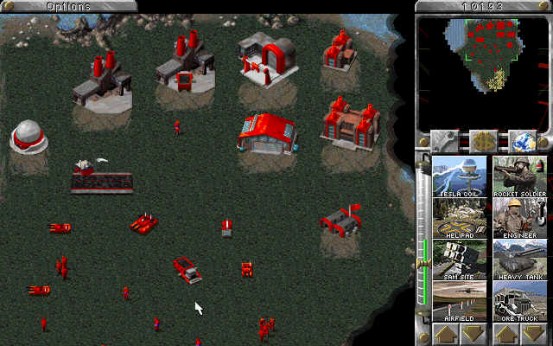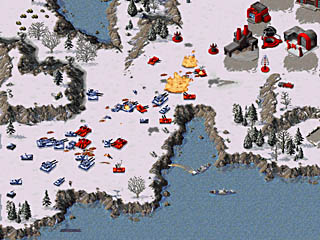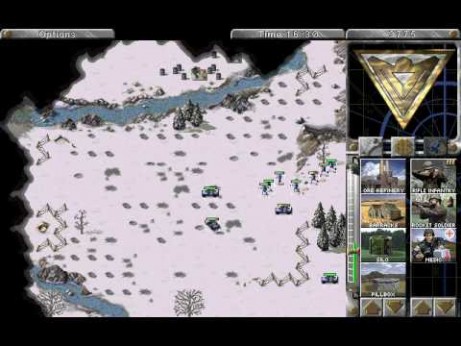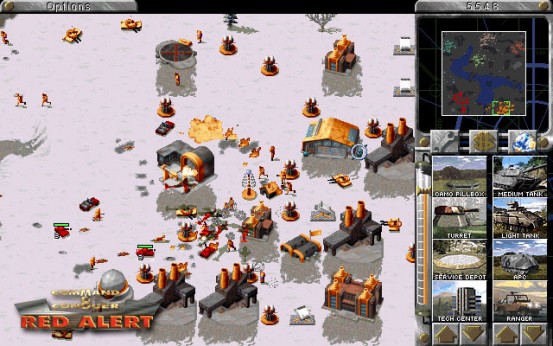
C&C: Red Alert
Red Alert is a great example of what I would deem as the golden age of the real time strategy genre (RTS). There is no need for “action per minutes” or a need to utilize a “rock paper scissors” approach to combat. No, you need to know your army, and you need to know what it does well.
Read on to find out what Red Alert did well, and how it surpasses a lot of games that came after it.
 Red Alert was first released in 1996 for the PC by Westwood Studios. As the second game to be released in the now long running Command and Conquer series, Red Alert acted as a prequel to C&C: Tiberium Dawn. Set in an alternate timeline, where Einstein goes back in time and stop Hitler from becoming the man who would start WW2, the game features the Soviets and Allies facing off in a struggle for world dominance.
Red Alert was first released in 1996 for the PC by Westwood Studios. As the second game to be released in the now long running Command and Conquer series, Red Alert acted as a prequel to C&C: Tiberium Dawn. Set in an alternate timeline, where Einstein goes back in time and stop Hitler from becoming the man who would start WW2, the game features the Soviets and Allies facing off in a struggle for world dominance.
As I alluded to in the introduction, Red Alert is distinct in it’s approach to RTS design. Games such as Blizzard’s Warcraft (yes, it was an RTS series before it was an MMO) take a “rock paper scissors” and “clone” approach to unit design and combat. What I mean by this, is that each faction, or army, present within the game has fundamentally the same units. I.e. Warcraft’s Orcs are the same as the Humans from a combat perspective. While some of you may cry foul at this, let me expand on what I mean.
In RTS games such as Warcraft, each faction has a number of seemingly unique units. Apart from graphical differences however, they can all be matched with similar units from the opposing faction. Warcraft 2’s Human Ballista unit is the same as the Orc’s Catapult (both are artillery units), and the flying machine is the same as a zeppelin (both allow aerial attack). This essentially boils the game down to an “amass as many mixed units as you can and rush the base” approach to gameplay. The rock-paper-scissors comparison comes down to the fact that each unit in Warcraft, and other strategy games, can be effectively countered by opposing units. If your enemy is sending in Orc zeppelins, you build some anti-air units. If they’re sending in some foot infantry, better build something that will counter that. There really is little difference in both commanding your army, or deploying them, amongst the different factions.
from the opposing faction. Warcraft 2’s Human Ballista unit is the same as the Orc’s Catapult (both are artillery units), and the flying machine is the same as a zeppelin (both allow aerial attack). This essentially boils the game down to an “amass as many mixed units as you can and rush the base” approach to gameplay. The rock-paper-scissors comparison comes down to the fact that each unit in Warcraft, and other strategy games, can be effectively countered by opposing units. If your enemy is sending in Orc zeppelins, you build some anti-air units. If they’re sending in some foot infantry, better build something that will counter that. There really is little difference in both commanding your army, or deploying them, amongst the different factions.
Where Red Alert differed though, was that the strengths and weaknesses of both factions needed to be taken into account. The Soviet units are slower and more expensive than their Allied counterparts, yet do more damage and are much more durable. The Soviets also excel at defending against aerial and ground attacks, yet are hopeless when it comes to naval battles. Juxtaposed, the Allied ground and air units are nimble and cheap, yet do little damage compared to the Soviets. However, they can build extremely powerful naval units, which dwarf the small Soviet naval presence.

These differences force you to work with your factions strengths and weaknesses. You need to know the subtle differences of your units, and how to use them against your enemy. Your strategies, and the types of units you build, have to thought out if you want to win. If you try to employ the same tactics with the Allied as you would with the Soviets, you are going to lose. Sending a horde of fragile allied tanks into a heavily fortified Soviet base is just an invitation for destruction. You nee to play smart, and put emphasis on what your faction does best. You can’t just mass a number of units and send them in to attack.
Overall, Red Alert is part of a fantastic series which has unfortunately been destroyed in recent years by Electronic Arts (they bought out Westwood at the turn of the century). If you get a chance, I suggest you go back and play Red Alert, or the other games in the series.